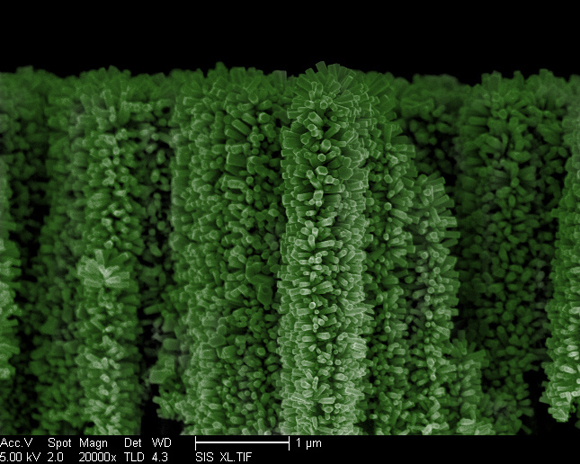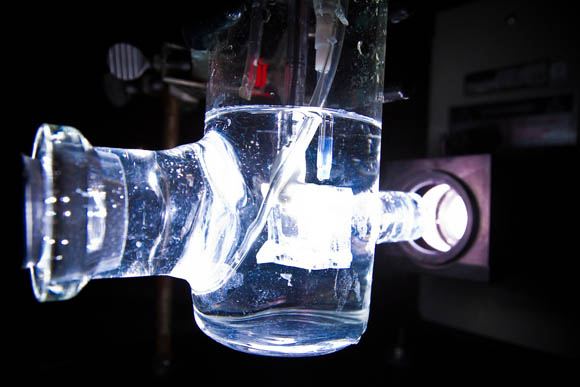This article is more than 1 year old
Boffins boost fuel-cell future with 'nanowire forest'
Harvesting hydrogen without greenhouse-gassy juice
Researchers at a California university have developed a nanowire-based method to efficiently harvest hydrogen for fuel cells without the need for electricity, which is commonly generated by greenhouse-gas producing fossil fuels or nuclear reactors with their problematic waste.
"This is a clean way to generate clean fuel," said Deli Wang, a professor at the UC San Diego's Jacobs School of Engineering, where the breakthrough was made.
Hydrogen may be the most abundant element in our universe, but here on earth it's commonly found bound up with other elements such as nitrogen or fluorine – and, of course, with oxygen to create good ol' H2O.
The trick has been to separate out the hydrogen without the need for expensive, and often dirty, electrical power. In recent years, work has proceeded on mimicking photosynthesis to use the power of sunlight to break the hydrogen-oxygen bonds in water.
The Jacobs School team's brainstorm was to maximize the solar energy brought to the task by vastly increasing the bond-breaking surface area with 3D branched nanowire structures the School calls "a forest of tiny nanowire trees".

The nanowire forest, tinted green in this image for emphasis (source: Jacobs School of Engineering)
"With this structure, we have enhanced, by at least 400,000 times, the surface area for chemical reactions,” said the aptly named Ke Sun, a UCSD doctoral candidate who led the project.
The nanowire trees not only provide increased surface area for the reaction, but their tiny size also makes for tinier bubbles of hydrogen, which are released more quickly than previously demonstrated planar solar-powered hydrogen-separating structures.
The harvested hydrogen gas can, of course, have a variety of uses, but the team is concerned specifically with its use as an energy source, such as in hydrogen-powered fuel cells.

Instant hydrogen; just add a nanowire forect and simulated sunlight
(source: Jacobs School of Engineering – click to enlarge)
"Hydrogen is considered to be clean fuel compared to fossil fuel because there is no carbon emission, but the hydrogen currently used is not generated cleanly," said Sun.
Creating cheap, clean hydrogen for fuel cells is all well and good, but Wang's research group has bigger fish to fry: their ultimate goal is to replicate photosynthesis itself.
As you'll remember from your high school biology classes, photosynthesis works by using solar power to transform CO2 into carbohydrates that the plant then uses for its own energy source. Wang's team seeks to mimic that process to extract that ever-increasing greenhouse gas from the atmosphere and transform it into hydrocarbon fuel.
"We are trying to mimic what the plant does to convert sunlight to energy," said Sun. "We are hoping in the near future our 'nanotree' structure can eventually be part of an efficient device that functions like a real tree for photosynthesis."
The work of Wang, Sun, and their collegues is published in the peer-reviewed journal Nanoscale, and team members will present their research at the annual Research Expo, held this April at the Jacobs School of Engineering. ®
